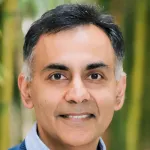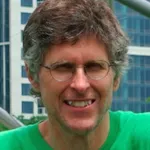
Image by Liya Graphics, Shutterstock.
Stanford Report - February 19th, 2015 - by Amy Adams
A protein found in pancreatic tumors may lead to a new chemotherapy that is effective against many different kinds of cancers, but turning the discovery into a new drug has required a bit of chemistry know-how.
Back in 2007, Anson Lowe, an associate professor of medicine, was working with Patrick O. Brown, then a professor of biochemistry, to find genes that are active in pancreatic tumors. Lowe was concerned about the lack of effective therapies for people with pancreatic cancer and hoped that by finding genes that are active in those tumors he could help to develop drugs that could block the gene's activity and thus stop the cancer.
In their initial experiment, the group found a gene that was often active in cells taken from pancreatic tumors, but not in normal pancreatic tissue. They and others later found that same gene in tumors in the lung, prostate, ovary, breast and elsewhere.
"It was clearly present in many different human cancers, probably around 70-80 percent of human solid tumors," Lowe said. Any drug he developed based on this discovery in pancreatic tumors might be effective in all of those different cancers.
"I hope this will be an example of something we can take all the way to people," Lowe said.
The gene Lowe and his team had identified turned out to make a protein called AGR2, which was well-known to scientists for the role it plays in the developing embryo and also in wound healing.
The group wiped out AGR2 from cancerous cells in a lab dish and those cells essentially stopped dividing. This left Lowe with two major questions: What exactly is AGR2 doing in cancerous cells? Is it possible to develop a drug that would re-create those cancer-halting effects in people?
The first answer
Last week, Lowe and his team published a paper in the Journal of Biological Chemistry answering the first question. They show that AGR2 serves as the gatekeeper for a well-known cancer bad guy, called EGFR, which is commonly found on the surface of cancer cells. EGFR responds to signals in the environment and prompts the cell to keep growing and dividing. Several cancer therapies block the activity of EGFR and its relatives, preventing it from spurring the cancer on. If AGR2 regulates EGFR, it made sense that it would play an important role in cancer growth.
"We were excited on the one hand when we realized we hit pay dirt, but it is not a field we were in," Lowe said. The team had to quickly get up to speed on the 27,000 published papers describing the role of EGFR in cancer.
One thing those papers had in common was a focus on the protein's role on the cell surface. But all proteins on the surface wind their way up to the outer membrane though a maze-like network of tubes within the cell called the endoplasmic reticulum. Within this structure, other proteins groom and ready those that are destined for the surface.
Lowe and his team, which included Aiwen Dong, a research associate, and Dariusz Wodziak, a research assistant, showed that AGR2 is responsible for grooming EGFR for its debut on the cell surface. When AGR2 is missing from the endoplasmic reticulum, as in most normal cells, EGFR never makes it to the surface and can't cast its cancerous signals. If AGR2 is inappropriately present, as in tumor cells, EGFR makes its way to the surface where it promotes tumor growth.
Lowe thought that if he could make a drug that prevents AGR2 from doing its job, then EGFR would remain stuck in the endoplasmic reticulum (where it would eventually be destroyed) and wouldn't be available to trigger the cell to keep dividing.
The art of making a drug
Having figured out what AGR2 does, Lowe was faced with the second question, that of whether a drug could block its activity. Many medical research stories end with a hopeful promise of future drugs, but developing those drugs is outside the skillset of most biologists.
Lowe took his idea to drug companies, who do have the skills needed to develop drugs, but they were reluctant to devote resources until there was more data to show that an investment would pay off. Can a drug reach proteins in the endoplasmic reticulum? Can it block just AGR2 and not other, closely related proteins doing essential work? They wanted some initial answers before taking on the project.
This is where Chaitan Khosla, director of Stanford ChEM-H and professor of chemistry, entered the story. When he founded ChEM-H in 2013 as a new interdisciplinary institute on campus, he wanted to bring chemical expertise to bear on problems of human health. He started a medicinal chemistry program within ChEM-H and hired Mark Smith, who has had more than a decade of experience developing drugs at Roche, to run it.
"The medicinal chemistry program fills a void we had at Stanford," Lowe said.
He calls the act of creating a new drug an art. We are all so used to taking pills for headaches, allergies and infections that we forget how amazing it is that any drug produces results.
The chemical in the pill we swallow has to survive the burbling acidic soup of our stomachs and the digestive enzymes capable of reducing steak and potatoes into tiny particles. Once in our bloodstream, a potential drug has to endure the liver's attempts to detoxify it, and then reach the cell in question and – the hardest part – actually work.
Smith said the researchers are in the early stages of finding a drug to block AGR2. "We want to make sure that we develop a compound that is both potent and selective for AGR2 and that can be taken orally," Smith said.
If Lowe and Smith are successful in finding a good drug candidate, Lowe said that additional resources exist at Stanford to help them move on to the next step. For example, SPARK, directed by Daria Mochly-Rosen, the George D. Smith professor in translational medicine, helps faculty navigate the process of translating drug candidates into therapies that are available to help people.
That last step – helping people – is what drove Lowe to start this research almost a decade ago.


